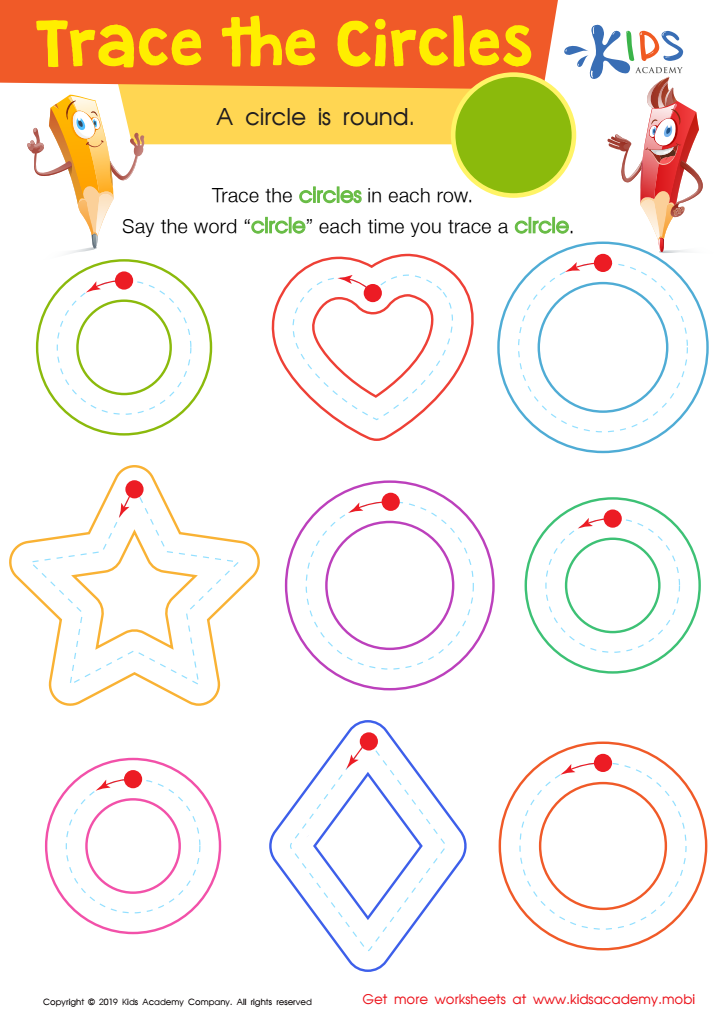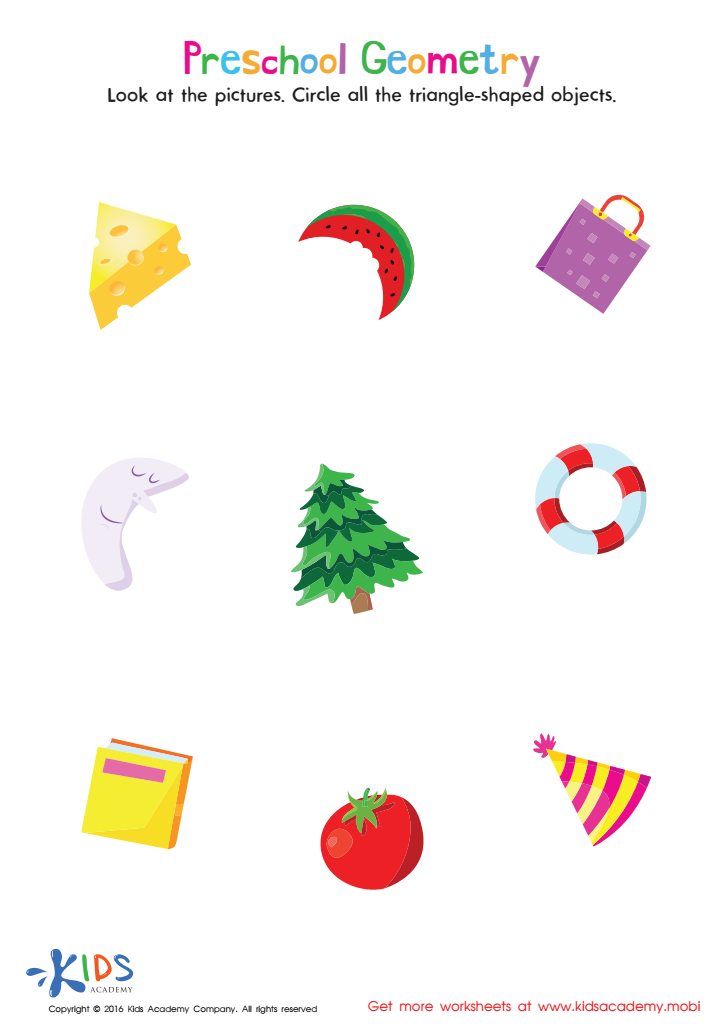Hand-eye Coordination Geometry Worksheets for 5-Year-Olds
3 filtered results
-
From - To
Enhance your child's geometric skills and hand-eye coordination with our engaging and educational geometry worksheets tailored for 5-year-olds. These worksheets feature fun, age-appropriate activities designed to develop children's fine motor abilities, spatial awareness, and understanding of basic geometry concepts. Through tracing, drawing, and simple puzzle challenges, kids will enhance their coordination while learning about shapes, patterns, and symmetry. Perfect for home or classroom use, our worksheets offer a rich, interactive way to make learning math an adventure. Give your child a head start in geometry with our expertly designed educational resources!


Trace The Circles Worksheet


Trace and Draw More Shapes Worksheet
Hand-eye coordination geometry activities are crucial for 5-year-olds because they lay a strong foundation for both cognitive and physical development. At this age, children are honing their ability to synchronize what they see with the movements of their hands, which is pivotal for daily tasks and more complex learned abilities later on.
Engaging in geometric activities, like puzzles or shape sorting, enhances a child's spatial awareness and fine motor skills. By manipulating geometric shapes, they learn to recognize patterns, improve hand dexterity, and develop problem-solving abilities. These skills are essential for many future academic subjects, from mathematics to arts and handwriting.
Moreover, contributing to the early development of hand-eye coordination through geometric activities can boost a child’s confidence. As they complete tasks and solve problems, they experience a sense of achievement that encourages a positive attitude towards learning.
For parents, monitoring progress in these activities can offer insights into their child's development. Early detection of potential coordination issues allows for timely intervention that can correct or alleviate challenges before they escalate.
Overall, hand-eye coordination geometry entwines motor skills with cognitive growth, nurturing a balanced development in young children. It ultimately prepares them for a smoother transition into more structured classrooms, where these foundational skills will be crucial.
 Assign to My Students
Assign to My Students

















